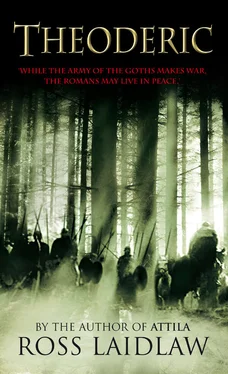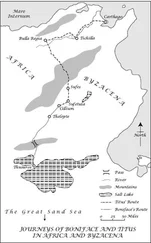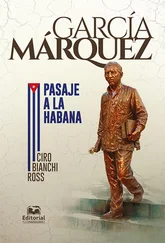Ross Laidlaw - Theodoric
Здесь есть возможность читать онлайн «Ross Laidlaw - Theodoric» весь текст электронной книги совершенно бесплатно (целиком полную версию без сокращений). В некоторых случаях можно слушать аудио, скачать через торрент в формате fb2 и присутствует краткое содержание. Жанр: Исторические приключения, на английском языке. Описание произведения, (предисловие) а так же отзывы посетителей доступны на портале библиотеки ЛибКат.
- Название:Theodoric
- Автор:
- Жанр:
- Год:неизвестен
- ISBN:нет данных
- Рейтинг книги:3 / 5. Голосов: 1
-
Избранное:Добавить в избранное
- Отзывы:
-
Ваша оценка:
- 60
- 1
- 2
- 3
- 4
- 5
Theodoric: краткое содержание, описание и аннотация
Предлагаем к чтению аннотацию, описание, краткое содержание или предисловие (зависит от того, что написал сам автор книги «Theodoric»). Если вы не нашли необходимую информацию о книге — напишите в комментариях, мы постараемся отыскать её.
Theodoric — читать онлайн бесплатно полную книгу (весь текст) целиком
Ниже представлен текст книги, разбитый по страницам. Система сохранения места последней прочитанной страницы, позволяет с удобством читать онлайн бесплатно книгу «Theodoric», без необходимости каждый раз заново искать на чём Вы остановились. Поставьте закладку, и сможете в любой момент перейти на страницу, на которой закончили чтение.
Интервал:
Закладка:
chatting easily with the Franks
Sidonius Apollinaris wrote to Syagrius congratulating him on his ability to communicate with barbarians. ‘I am. . inexpresibly amazed,’ he commented, ‘that you have quickly acquired a knowledge of the German tongue with such ease. . The bent elders of the Germans are astounded at you when you translate letters, and they adopt you as umpire and arbitrator in their mutual dealings.’
Clovis. . inspiring respect
For most of the fifth century, the pre-eminent barbarian power in Gaul was the Visigoths, with Frankish influence west of the Rhine tenuous at best. Following the death of the great Euric in 484, that situation rapidly went into reverse. By the time of Clovis’s death in 511, the Franks had become the dominant power in Gaul — whose name in consequence changed to Frankia/Francia (France).
Chapter 19
the Forts of the Saxon Shore
To counter Saxon raids, an increasingly serious threat from the late third century on, a chain of ten massive forts was built from the Wash to the Isle of Wight, under the command of the Comes Litoris Saxonici , the Count of the Saxon shore, the second highest military post after the Dux Britanniae . When the usurper Constantine (self-styled III) withdrew the regular troops from Britain in 407, the limitanei continued to function, even after the collapse of the Western Empire in 476. The last of them, the Numerus Abulcorum stationed at Anderida (Pevensey), were finally wiped out by the Saxons in 491.
his headquarters near Castra Gyfel
Despite Ilchester’s obvious Roman ancestry, I’ve been unable to trace its Roman name. In the Domesday Book it’s Givelcestre, ‘Roman town on the Gifl’. Gifl, being an earlier name for the River Yeo on which the town stands, would have been a Brythonic appellation. In the same way that the Romans called Chester (on the River Dee) Castra Deva, I’ve guessed that they might have called Ilchester Castra Gyfel.
a magical landscape
The grassy chalk uplands of southern England (mainly in Surrey, Sussex and Thomas Hardy’s ‘Wessex’) are rich in man-made features dating from neolithic times to the Iron Age: ridgeways along the crests of the various downs, chalk-cut giants and horses, barrows, stone circles of which Avebury and Stonehenge are the most famous, hill-forts, and that amazing eminence Silbury Hill (alluded to by Myrddin in the text). A few of the above are, or may be, imposters. All the extant White Horses, bar the one at Uffington (probably first-century BC), are eighteenth- and nineteenth-century, though two others, now destroyed, are known to have existed anciently. The Long Man of Wilmington is presumed to be ancient, as is the famously priapic Cerne Abbas Giant — though there’s a theory that the latter is an eighteenth-century forgery by an aristocratic joker poking fun at antiquaries.
an extraordinary edifice
Known today as Cadbury Castle (officially South Cadbury hill-fort), this Iron Age hill-fort with late-fifth-century additions has long been held to be King Arthur’s Camelot. This theory is reinforced by ‘Camel’ place-names in the vicinity: West Camel and Queen’s Camel; while the second name-word re the nearby Chilton Cantelo becomes ‘Canelot’ by switching round the letters. The Cadbury site, along with Glastonbury a few miles to the north, is a happy hunting-ground for Arthurian enthusiasts, with Glastonbury proving an especially copious fount of associated legend — the Holy Grail, Avalon, Excalibur, the Round Table, Arthur’s Grave (‘discovered’ in 1191), etc.
Artorius’ great victory at Mons Badonicus
‘Mount Badon’, in Arthurian legend, is where Arthur won a great victory against the Saxons. Two sites have been suggested for the battle, one at Liddington Castle, an Iron Age hill-fort six miles north of Marlborough in Wiltshire (the one I’ve chosen), the other at Badbury Rings, near Wimborne Minster in Dorset.
Chapter 20
which route to follow
Sources differ as to what route through the Julian Alps Theoderic took to reach Italy. Heather in The Goths and Wolfram in his History of the Goths both say he reached his goal via the valley of the Vipava (through the southern part of the Julian Alps), whereas Burns in History of the Ostrogoths states that Theoderic advanced up the Drava River (well to the north of the Julian Alps), then crossed the Julian Alps to the Isonzo River and on to Italy. Clearly, these two routes are mutually exclusive. I’ve settled for the Drava route as being perhaps strategically preferable to the other. Also, it enables one to exploit the dramatic bonus provided by the arresting Luknja Pass (which Theoderic would have had to use), the col below the awesome cliffs of Triglav’s north face.
its junction with the Sorus
I’ve been unable to find the Latin name for the River Sora, but as the Romans called the Drava ‘Dravus’ and the Sava ‘Savus’. .
the highest summit of the Alpes Juliae
Having had no luck tracing the three-peaked Triglav’s Latin name, I’ve resorted to invention, following the example of ‘Trimontium’, the name the Romans gave the three-peaked Eildon Hills in Roxburghshire, where Agricola established a great military camp. (S

ik, Triglav’s sister peak, I’ve christened Spica, Latin for ‘spike’: appropriate, considering the mountain’s shape and present name.)
a vast stony trough
This is Vrata, the long valley that leads from the Sava up to the pass of Luknja, overlooked by the towering cliffs of Triglav’s North Face. The waterfall described in the text is the upper one at Slap Peric? nik; I’ve moved it nearer the stream (which does indeed disappear underground) to enable Theoderic’s wagons to pass beneath it. The terrain on the far side of the pass I’ve described as less steep than it actually is, in order to point up the rigours of the ascent by contrast.
Odovacar. . had withdrawn
Wolfram, Burns and Heather say that an inconclusive battle was fought between the two rivals at Isonzo Bridge, resulting in Odovacar retreating to Verona. However, Moorhead suggests that Odovacar, alarmed by the size of Theoderic’s host, withdrew from the Isonzo without giving battle. (7Ennodius, in Panegyricus dictus Theoderico , describes Odovacar as summoning all the nations against Theoderic, with very many kings coming to fight for him. Whoever these kings were — and it’s tempting to dismiss them as hyperbolic — they were conspicuous by their absence when Odovacar did eventually confront Theoderic in battle.)
Chapter 21
he had been. . entombed — alive
Rumours that Zeno had been heard crying for help from within the tomb (cries that were ignored, due to his being a hated Isaurian), gained wide circulation in Constantinople, and were long believed. Even a hundred and fifty years later, the emperor Heraclius gave orders on his death-bed that his corpse should lie in state until corruption had set in, lest he suffer the same fate.
an undistinguished. . palace official
Despite his being elderly at his accession, the twenty-seven-year reign of Anastasius was one of the Eastern Empire’s longest. It was also, despite being comparatively uneventful, one of the most successful and enlightened. A mild and by all accounts rather colourless individual, Anastasius suppressed the barbarous fights between men and wild beasts, abolished the sale of offices and an ancient tax on domestic animals, constructed aqueducts, harbours and the Long Wall to the west of the capital as an extra defence against barbarian incursion, and campaigned effectively against Persians and Isaurian insurgents. A not unimpressive record, which compares favourably with those of many Eastern emperors.
Читать дальшеИнтервал:
Закладка:
Похожие книги на «Theodoric»
Представляем Вашему вниманию похожие книги на «Theodoric» списком для выбора. Мы отобрали схожую по названию и смыслу литературу в надежде предоставить читателям больше вариантов отыскать новые, интересные, ещё непрочитанные произведения.
Обсуждение, отзывы о книге «Theodoric» и просто собственные мнения читателей. Оставьте ваши комментарии, напишите, что Вы думаете о произведении, его смысле или главных героях. Укажите что конкретно понравилось, а что нет, и почему Вы так считаете.












